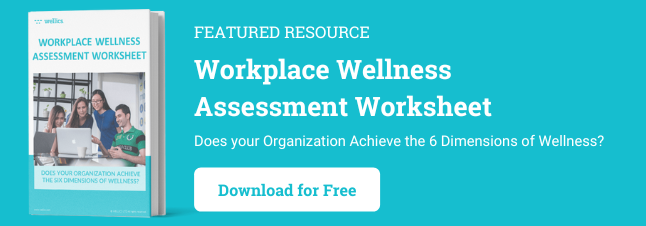Is your business looking for a way to grow and reach certain milestones? Do you feel like your employees are pulling away from their duties?
Well, if this is what you’re also troubled about, you’re not alone. Many businesses nowadays struggle with these issues, and they are looking for solutions that will help them grow.
One of the most effective ways is to find motivated employees who will help you accomplish those goals and objectives of your business.
Now, how do you recruit and look for talent that best suits your interests? The answer is: Strategic HR Management Plan (SHRM).
SHRM is a new and innovative HR plan that helps businesses grow further and accomplish what they are missing. It works as a savior by making sure your business reaches its full potential.
In this article, we will explain strategic HR management, its importance, its benefits, and more. Make sure you read to the very end to learn more.
What is a Strategic HR Management Plan?
First things first, HR is the pillar of any organization and has many responsibilities. They need to ensure that the employees are aligned with your company's goals and objectives.
But why? This is because achieving a long-term goal is on everybody's bucket list. With the help of a Strategic HRM Plan, you get to have it!
The main focus and goal of SHRM is to create HR policies to increase your company's growth. Moreover, it can also help you maintain the core objectives and business strategy.
A Strategic HR Management Plan is a detailed blueprint connecting HR practices with an organization's strategic goals. It's not only about filling out forms or handling routine tasks but understanding that every HR decision supports the company's long-term strategic goal.
But the real question is, is it really that simple? Well, it's about developing a plan that gives everybody an advantage. There are different strategies and steps to creating a plan that will cater to your company's success. Again, it is as easy as you want it to be.
Why is the Strategic Human Resource Management Plan important? 
You might think, "Does your business need a new HR management plan?" The short answer is: yes, you do. Without an effective HR strategic plan, your HR professionals would lack a clear direction.
However, a solid Strategic HR Management Plan ensures workforce planning aligns with business objectives.
It can help a business increase job satisfaction, create a better work culture, boost productivity, and achieve specific goals. Ultimately, this teamwork can improve work, make employees happier, and create a place where employees want to be.
Additionally, an ineffective strategic HR plan would also cause complications for your business. For example, you might hire the wrong people, leading to a less productive and motivated workforce.
But with a strategic plan, you can understand your needs, effectively focus on talent management, and keep them engaged and productive.
Key benefits of a Strategic HR plan
Creating a Strategic plan has many benefits, as it aims to deliver efficiency at work by creating a set of employees who are aligned with each other.
From improving recruitment to boosting the company's growth, SHRM is what every company needs to succeed.
Aligns HR Goals with Business Objectives
One key advantage is that it aligns HR goals with the overall strategic business objectives. The motive is to ensure everyone works together and achieves the desired results.
Similarly, aligning HR and business goals ensures everyone is working towards the same vision, which also helps maintain sync within the organization.
Enhances Employee Performance
Employees are one of the most important aspects of any organization. A strategic HR plan focuses on performance management.
The way to achieve a high-performing team is simply to create a team that has the potential to deliver effective results.
This ensures all employees work towards the same goal and maintain the company's desired flow.
Fosters Organizational Growth
When employees perform positively, it will benefit your entire organization. This will lead to significant growth, which is definitely the ultimate goal of any organization.
But how can you achieve success? We recommend providing employees with a motivated and stress-free workplace. This ensures that the employees are moving towards the company's benefits.
Improves Recruitment and Retention
As the job market is highly competitive, you must attract and retain top talent. A strategic HR management plan can help your organization attract potential candidates who are more likely to deliver better results.
New techniques can improve the recruitment process. It can also help target exceptional talents who are well-aligned with the job's roles and responsibilities.
Attracts Top Talent
You can create an appealing reputation for any organization with a clear strategy. This isn't just about offering high salaries and creating a work environment where people want to be.
As Gen Z employees enter the workforce, toxic work culture is the last thing on their minds, so ensuring a healthy environment will help attract new talents.
Reduces Turnover Rates
High turnover is a productivity killer. A strategic HR plan can significantly decrease turnover rates by meeting employee needs and promoting a positive work environment.
Strategic management targets many concerns to build a road towards success for a company. Adapting a new HR plan can be difficult, but it delivers exceptional results.
Difference between Traditional and Strategic Human Resource Plans
Human resource management has evolved greatly in the business world. The shift from traditional HR plans to strategic ones is a major change in how companies manage their employees.
Understanding the difference between the two strategies can help businesses succeed.
Reactive Approach
Let's break this down. Traditional HR management is a plan that addresses core HR tasks and revolves around basic human resource responsibilities.
The main focus is on achieving everyday tasks like recruiting, training, updating policies, and many more. These are the reasons why developing a well-researched and effective plan for HR management is crucial.
One problem with this method is that the HR leaders may rush processes at times, making the employees feel disconnected and creating a low-motivated team.
Proactive Approach
On the other hand, strategic HR management is a plan that uses business strategy to develop a plan that benefits the company.
SHRM is innovative, forward-thinking, and designed to offer a pleasant experience for everyone. This plan helps in understanding future needs and then working with a plan to reach goals.
This way, you can stay ahead of your corporate journey while staying connected with your team. This strategic approach directs all HR efforts toward achieving organizational goals.
Is this change necessary?
The growing change in the corporate world demands that SHRM be adopted as a new HR plan because of its benefits to employees and employers.
Strategic HR involves using different techniques to help align the employees with company goals, which is important to achieve long-term success. This plan helps businesses become more adaptable, perform better, and stay competitive in a changing market.
Introducing SHRM is essential as it helps give employees a clear sense of direction while creating a more open and transparent environment.
A regular company only hires when there are job openings and solves issues as they arise without focusing too much on the HR planning process.
On the other hand, A company with SHRM predicts future hiring needs, creates talent pools ahead of time, and ensures their HR plans match business needs.
How You Can Create a Strategic HR Management Plan

Step 1. Assess Current HR Capabilities
First things first, take a look at your current HR plan. An HR audit can help you understand what you're good at and where you can improve.
Look at everything, from hiring to how well your employees are doing, and carefully assess the retention rate. This will help you understand your weaknesses and strengths.
After the audit is complete, you need to determine what gaps and skills your team is missing. Which skills do you require for future goals?
Moreover, understanding gaps is essential to creating a plan that shows new ways to hire and train employees. This way, you can quickly fill in the missing skills.
Step 2. Align HR Goals with Company Objectives
Your HR department's goals must align with your overall company strategy. This means understanding where your business is headed and what it needs to do to get there.
Are you planning to expand? Launch new products? Enter new markets? Your HR team strategies should help you achieve these goals.
Keep your business plan in mind and set specific and attainable HR objectives. These could include improving employee loyalty or providing training programs.
Having clear objectives guides you and makes it simpler to track your progress.
Step 3. Develop Strategies for growth
Attracting the best employee begins with having a good reputation as an employer. This is how job seekers see your company as a great workplace.
Highlight what sets your company apart and why it's a place to grow a career. Happy employees and good reviews can help improve your reputation as an employer.
Developing strategies and plans provide an outline for addressing any issues and gaps found during the HR audit.
Come up with plans to fix any gaps or issues and focus on the most important ones first. This will ensure that you are targeting the right gaps correctly.
Step 4. Implement Effective Recruitment Processes
Make your recruitment process super smooth, efficient, and friendly for candidates. This will help them ease into it and ensure a hassle-free approach.
You are taking advantage of technology by using AI-driven tools designed for screening candidates. With quick and efficient recruitment processes, you can grab the best talents quickly.
With new AI tools in the market, you can quickly screen the resumes of multiple candidates with a simple click and access their skills to match the requirements.
Step 5. Foster Employee Development
Employees often want to grow and develop their skills. This is why you need to invest in different training programs. This will help you enhance their skills and show that you value their career growth.
This can result in employees feeling more devoted to their work and also reduce turnover rates. Providing training is a great way to make employees excel in their areas of expertise.
Focus on creating transparent career pathways within your organization. Employees should be aware of different advancement opportunities and the steps to take to reach them.
This transparency can be highly motivating and inspire employees to remain and thrive within the organization.
Step 6. Recognize and Reward Performance
Don't underestimate the power of recognition. Always recognize and appreciate your employees' efforts and accomplishments.
Studies have shown that companies that regularly recognize their employees' work have a better success rate than companies that do not.
Businesses can give them special awards, extra bonuses, or even a simple shoutout. When employees feel recognized, they feel their hard work is valued, motivating them.
Step 7. Measure HR Performance
Make sure your HR plans are working well by checking them regularly and identifying if anything is not working or being looked upon. Keeping an eye on things like your employees' retention rate and engagement will also help you evaluate them better.
It is important to assess how many employees are benefiting from different training programs to ensure that they are actually beneficial.
Look at the data to help you determine what to do next and make necessary changes. This will allow businesses to implement plans that will actually work.
Step 8. Continuously Improve HR Practices
The business world is constantly shifting. Thus, businesses must align HR practices to change with them. Make sure to regularly look over and improve your HR strategies by keeping up.
Staying current with the newest trends and technologies and getting employee feedback will make the process smoother and more effective.
Continuously improving your HR strategies and practices will keep them more efficient and relevant to your employees' needs and help foster your company's growth.
Success stories of companies who implemented Strategic HR management plan
Google:
Google recognized that traditional HR methods were not working well for the changing workforce. So, they decided to try a new approach using SHRM.
They started using data to help them make decisions and gave their employees more priority and attention. Google crafted its HR strategy by keeping its employees' needs at the core.
Google also took steps to support its employees' physical and mental well-being. For example, it built fitness centres at its offices and offered healthy food options.
Cadbury:
Cadbury is a brand widely recognized for its delicious chocolates and other tasty treats. What sets Cadbury apart is its care for its employees, who are prioritized.
They have a simple HR strategy that puts the comfort of their employees first. They even have a worker village and R&D factories where their staff can live and work comfortably.
This approach may not suit everyone, but it shows how Cadbury's HR strategy perfectly fits with its overall business goals, especially in keeping its employees happy.
Marks & Spencer:
Marks & Spencer is known for being a successful brand, but they didn't just get to the top by spending a lot on ads, it was their unique HR strategies that helped them.
They've won many awards for being a great play to work and for maintaining a healthy environment for their employees. At M&S, they encourage the use of open communication.
Communicating openly has brought them great success; whether it's through executive meetings or daily calls, they pride themselves on having open communication.
Ready to implement a Strategic HR Management Plan?
In conclusion, a good HR plan ensures your employees are working towards the same goals as your company, encouraging a culture of always getting better and coming up with new ideas.
When HR strategies align with business goals, you can increase employee involvement, productivity, and retention.
As companies progress, it's crucial to keep checking and changing HR practices to keep up with the changing market.
Create a happy place by following the simple steps mentioned in this blog to ace your strategic HR management goal!








